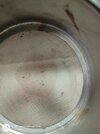D
Deleted member 9606
Guest
From the get go I decided to forego lacquers and enamels in order to stay on the good side of those who live with me. So, I’ve been using mostly Vallejo water based acrylics which required a learning curve. Acrylics In general dry quickly and inevitably on the tip of the airbrush or inside the nozzle. I find thinning properly and employing proper trigger discipline mitigates this significantly.
Dr. Strangebrush came up with this formula and it’s better than anything else I’ve tried.
Premix:
90% Vallejo Airbrush Thinner
5% Liquitex Flow-Aid
5% Liquitex Slo-Dri Fluid Additive (not their Slo-Dri Medium!)
That mix can be increased to 10% each on the Liquitex to as much as 20% for problematic acrylics. I live in a very dry climate in the winter and have used 80/10/10 with great results. I find the Liquitex works better than the corresponding Vallejo products.
Use this mix to thin your Vallejo Model Air at 70% paint : 30% thinner ratio. For Model Color reverse those numbers. Obviously thinning depends on several factors including the specific color you’re spraying, but it’s a good starting point.
This formula works with most acrylic lines utilizing their proprietary thinners, even including alcohol based acrylics such as Tamiya.
I’ve also learned to stop the paint flow first before stopping the air flow with my double action brush. This trigger discipline ensures the last of the paint will be blown off the needle when releasing the trigger, which mitigates tip dry and clogging.
Interesting article here.
Dr. Strangebrush came up with this formula and it’s better than anything else I’ve tried.
Premix:
90% Vallejo Airbrush Thinner
5% Liquitex Flow-Aid
5% Liquitex Slo-Dri Fluid Additive (not their Slo-Dri Medium!)
That mix can be increased to 10% each on the Liquitex to as much as 20% for problematic acrylics. I live in a very dry climate in the winter and have used 80/10/10 with great results. I find the Liquitex works better than the corresponding Vallejo products.
Use this mix to thin your Vallejo Model Air at 70% paint : 30% thinner ratio. For Model Color reverse those numbers. Obviously thinning depends on several factors including the specific color you’re spraying, but it’s a good starting point.
This formula works with most acrylic lines utilizing their proprietary thinners, even including alcohol based acrylics such as Tamiya.
I’ve also learned to stop the paint flow first before stopping the air flow with my double action brush. This trigger discipline ensures the last of the paint will be blown off the needle when releasing the trigger, which mitigates tip dry and clogging.
Interesting article here.

